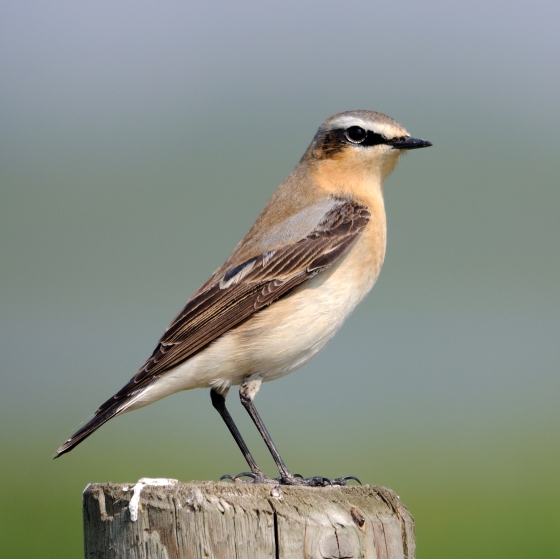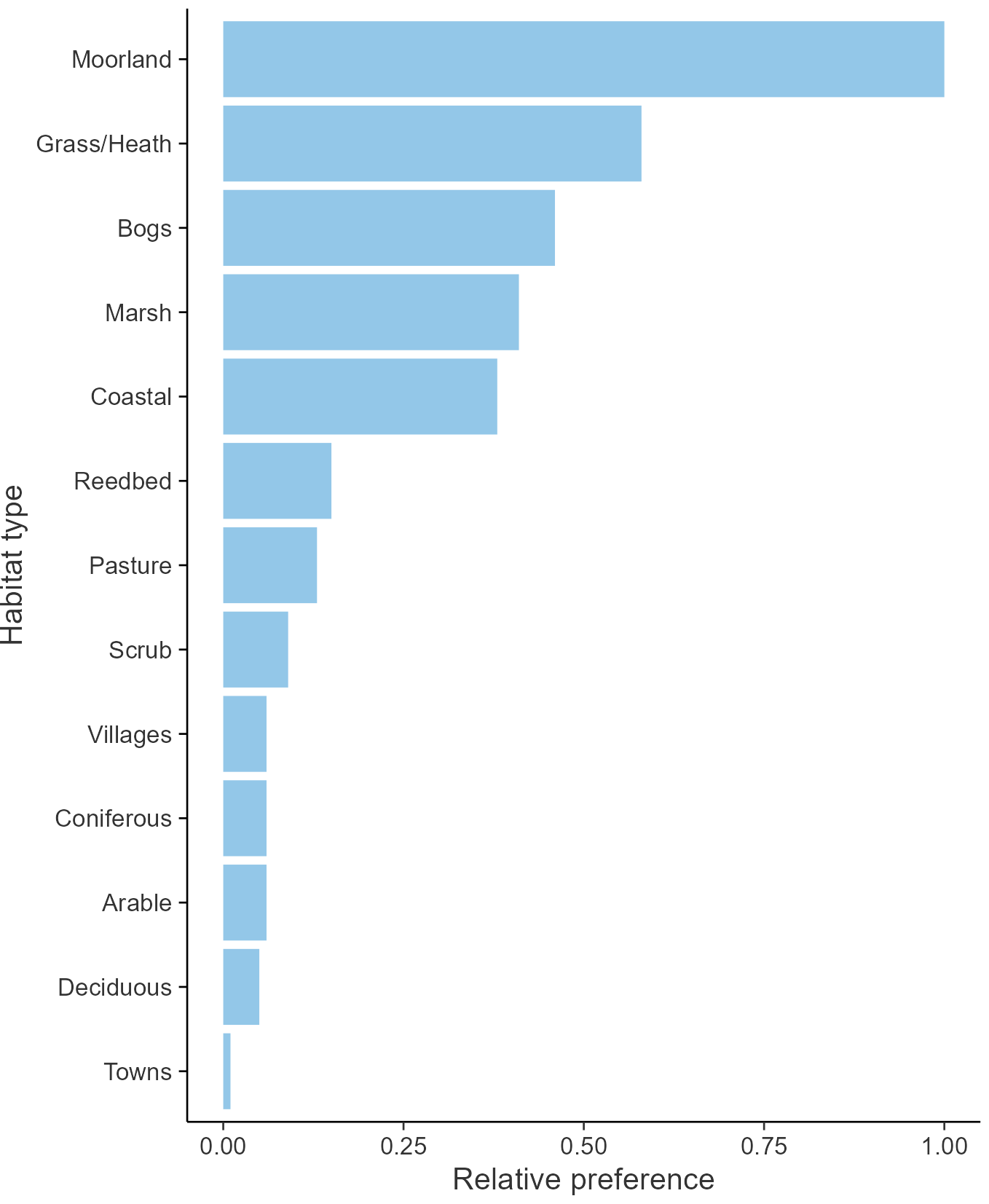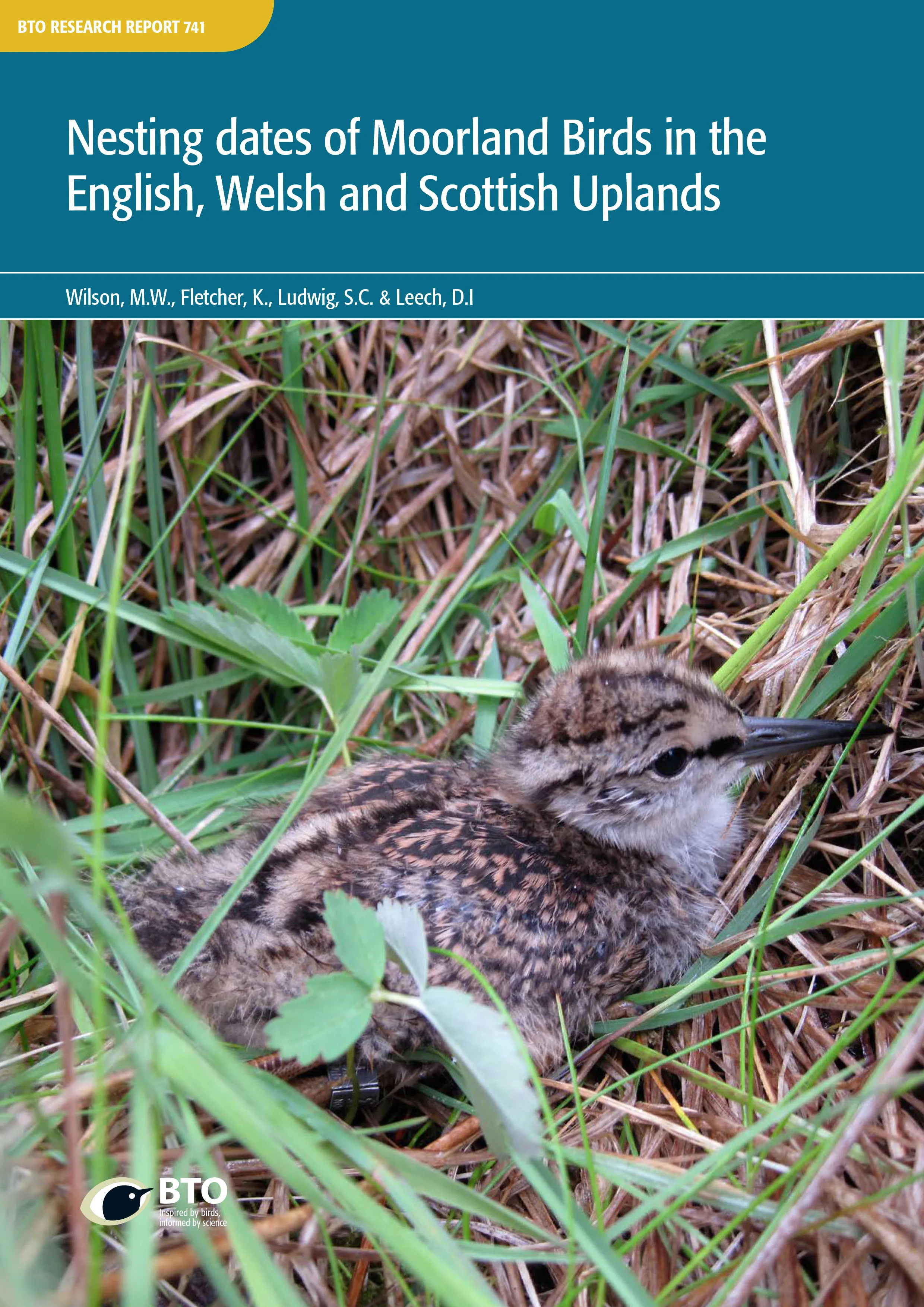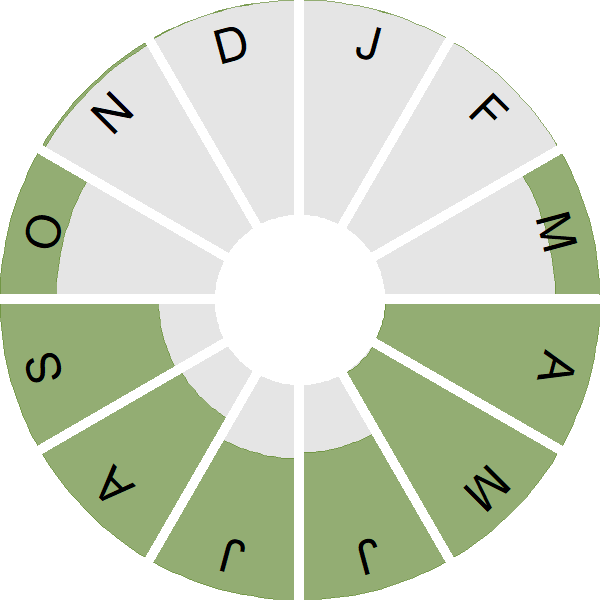Wheatear

Introduction
A bird of open country and our wilder places during the summer months, the Wheatear can be seen across Britain & Ireland.
The size of a Robin, the bandit-masked male and sandy brown female can be seen in Britain & Ireland from early March to late October). The Wheatear is a long-distance migrant, heading for Africa in the winter. During spring and autumn, birds making their way to and from Greenland and Alaska pass through the UK. These birds, which are larger and brighter than the birds that remain here to breed, undertake one of the longest migrations of any songbird, with some flying non-stop across the Atlantic to northern Spain and then on to West Africa.
UK Wheatear numbers have fluctuated in recent decades. There has been a moderate decline since 2010, placing the species on the UK Amber List. Although they can be spotted throughout Britain & Ireland on passage, Wheatears primarily breed in the north and west of each, including on Scotland's farthest flung islands.
- Our Trends Explorer gives you the latest insight into how this species' population is changing.

Key Stats
Identification
ID Videos
This section features BTO training videos headlining this species, or featuring it as a potential confusion species.
Stonechat, Whinchat and Wheatear
Songs and Calls
Song:
Call:
Status and Trends
Conservation Status
Population Change
Although it is a common breeding species in many upland areas, the Wheatear was not monitored at the UK scale until the BBS began in 1994. Gibbons et al. (1993) had by then identified range contractions from lowland Britain since 1968-72. Further loss of range, especially in lowland England, had been recorded by 2008-11 (Balmer et al. 2013). BBS trends show wide fluctuations, with little indication of directional change, although a moderate and ongoing decline since around 2010 has triggered alerts in England, Scotland and Wales and for the UK as a whole. Previous estimates of UK population have been revised strongly upward, based on BBS distance-sampling data (Gillings et al. 2007).
There has been a decline across Europe since 1980 (PECBMS: PECBMS 2020a>). Following widespread declines during the 1990s, the European status of this species was no longer considered 'secure' (BirdLife International 2004). Accordingly, the species was moved from the green to the amber list in the UK in 2009 (Eaton et al. 2009). Following a review of its European status, however, Wheatear returned to the UK green list in 2015 (Eaton et al. 2015). Studies of remnant populations in the Netherlands indicate that conservation action may need to be site specific (van Oosten et al. 2015).
In 2012 and 2013, BTO conducted a Wales Chat Survey for Whinchats, Stonechats and Wheatears. Breeding Wheatears were associated with grassland and rocky outcrops, and the population estimate for Wales was 13,759 pairs (95% confidence intervals: 7,153-25,861); however this estimate was considered high in comparison with previous Welsh population estimates, and dedicated survey methodology may be required for accurate assessment of this species' population (Henderson et al. 2017).
Distribution
Wheatears are summer visitors to the uplands and coasts of north and west Britain, and to the northern and western counties of Ireland. Elsewhere they are localised, with small outposts in Ireland on the Antrim coast and in the Wicklow Mountains, and in Britain on Salisbury Plain and in a handful of coastal squares in southeast England. Densities are highest throughout the uplands and near the coast. Many Scottish islands also support high densities, possibly because on many, most of the land is near the coast.
Occupied 10-km squares in UK
or view it on Bird Atlas Mapstore.
or view it on Bird Atlas Mapstore.
European Distribution Map
Distribution Change
Since the 1970s there has been a 14% range contraction in Britain and a 24% contraction in Ireland. Gradaul losses have led to the disappearance of distinct breeding areas, including the southeast coast of Ireland, Breckland and the southern English heaths and downland.
Change in occupied 10-km squares in the UK
or view it on Bird Atlas Mapstore.
or view it on Bird Atlas Mapstore.
Seasonality
Wheatear is a summer visitor, with first birds arriving in mid March; migration peaks in late April./early May but migrants can continue to arrive, particularly those bound for Greenland. Autumn migration is mostly in August and September but late birds can be seen into early November.
Weekly pattern of occurrence
The graph shows when the species is present in the UK, with taller bars indicating a higher likelihood of encountering the species in appropriate regions and habitats.

Habitats
Breeding season habitats
Relative frequency by habitat
The graph shows the habitats occupied in the breeding season, with the most utilised habitats shown at the top. Bars of similar size indicate the species is equally likely to be recorded in those habitats.

Movement
Britain & Ireland movement
Foreign locations of birds ringed or recovered in Britain & Ireland
Dots show the foreign destinations of birds ringed in Britain & Ireland, and the origins of birds ringed overseas that were subsequently recaptured, resighted or found dead in Britain & Ireland. Dot colours indicate the time of year that the species was present at the location.
- Winter (Nov-Feb)
- Spring (Mar-Apr)
- Summer (May-Jul)
- Autumn (Aug-Oct)

European movements
EuroBirdPortal uses birdwatcher's records, such as those logged in BirdTrack to map the flows of birds as they arrive and depart Europe. See maps for this species here.
The Eurasian-African Migration Atlas shows movements of individual birds ringed or recovered in Europe. See maps for this species here.
Biology
Productivity and Nesting
Nesting timing
Egg measurements
Clutch Size
Incubation
Fledging
Survival and Longevity
Survival is shown as the proportion of birds surviving from one year to the next and is derived from bird ringing data. It can also be used to estimate how long birds typically live.
View number ringed each year in the Online Ringing Report.
lifespan
Survival of adults
Biometrics
Wing length and body weights are from live birds (source).
Wing length
Body weight
Ring Size
Classification, names and codes
Classification and Codes
- Order: Passeriformes
- Family: Muscicapidae
- Scientific name: Oenanthe oenanthe
- Authority: Linnaeus, 1758
- BTO 2-letter code: W.
- BTO 5-letter code: WHEAT
- Euring code number: 11460
Alternate species names
- Catalan: còlit gris
- Czech: belorit šedý
- Danish: Stenpikker
- Dutch: Tapuit
- Estonian: kivitäks
- Finnish: kivitasku
- French: Traquet motteux
- Gaelic: Brù-gheal
- German: Steinschmätzer
- Hungarian: hantmadár
- Icelandic: Steindepill
- Irish: Clochrán
- Italian: Culbianco
- Latvian: akmencakstite, baltspraklis
- Lithuanian: paprastasis kultupys
- Norwegian: Steinskvett
- Polish: bialorzytka (zwyczajna)
- Portuguese: chasco-cinzento
- Slovak: skaliarik sivý
- Slovenian: kupcar
- Spanish: Collalba gris
- Swedish: stenskvätta
- Welsh: Tinwen y Garn
- English folkname(s): White Arse
Research
Causes of Change and Solutions
Causes of change
There is little good evidence available regarding the drivers of the breeding population increase in this species in the UK.
Further information on causes of change
The range contractions from lowland Britain between 1968-72 and 1998-91 were perhaps due to losses of suitable grassland and declines in rabbit abundance (Gibbons et al. 1993), although this is speculative. However, a Swedish study found that population changes there were linked to the availability of short ground vegetation (Paquet et al. 2019) and a study on the East Frisian Islands (Germany) found that Wheatears were more abundant on islands with larger rabbit populations and hence short turf and burrows for nesting (Kampfer & Fartmann 2019). Additionally, in Cumbria, abundance fell where sheep density was reduced and sward length increased, creating conditions where food was likely to be less accessible (Douglas et al. 2017).
Nest failure rates at the egg stage have fallen substantially and nest productivity has risen, although the reasons for these changes are not known.
Information about conservation actions
The drivers of change for Wheatear are unclear and therefore few specific conservation actions have been proposed for this species. It is possible, although uncertain, that changes could be linked to reductions in rabbit abundance and grazing which may have led to changes in the availability and quality of grassland habitat (see Causes of Change section, above). Studies suggest that breeding Wheatears prefer shorter turf where prey densities were higher and prey is more accessible (Tye 1992; Douglas et al. 2017; Paquet et al. 2019); hence maintaining a suitable level of grazing or undertaking other management actions to provide short turf may improve breeding productivity. However, over-grazing can also negatively affect the abundance of other species using upland heath or moorland habitats where the vast majority of the UK's Wheatears are now found. Further research is therefore needed to identify optimum levels of grazing to ensure suitable habitat is available to Wheatears and other species.
Publications (2)
Birds of Conservation Concern Wales 4: the population status of birds in Wales
Author: Johnstone, I.G., Hughes, J., Balmer, D.E., Brenchley, A., Facey, R.J., Lindley, P.J., Noble, D.G. & Taylor, R.C.
Published: 2022
The latest review of the conservation status of birds in Wales. The report assessed all 220 bird species which regularly occur in Wales. There are now 60 species of bird on the Red List, with 91 on the Amber List and just 69 - less than a third of the total number of species - on the Green List.
06.12.22
Reports Birds of Conservation Concern

Nesting dates of Moorland Birds in the English, Welsh and Scottish Uplands
Author: Wilson, M.W., Fletcher, K., Ludwig, S.C. & Leech, D.I.
Published: 2022
Rotational burning of vegetation is a common form of land management in UK upland habitats, and is restricted to the colder half of the year, with the time period during which burning may be carried out in upland areas varying between countries. In England and Scotland, this period runs from the 1st October to 15th April, but in the latter jurisdiction, permission can be granted to extend the burning season to 30th April. In Wales, this period runs from 1st October to 31st March.This report sets out timing of breeding information for upland birds in England, Scotland and Wales, to assess whether rotational burning poses a threat to populations of these species, and the extent to which any such threat varies in space and time.
17.02.22
Reports Research reports


